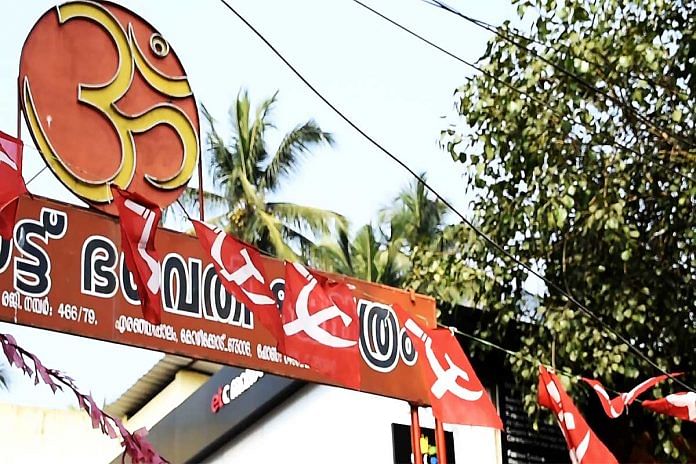In Kannur district, there have been 69 political murders between 2000 and 2016; 31 of those killed were from the RSS/BJP and 30 from CPI(M).
Kannur: On a dark, humid night in May 2017, the Toyota Innova had followed K. Biju’s motorcycle for an hour. Oblivious to the lurking danger, Biju, a 33-year-old house painter and RSS worker, rode on with a friend.
They were just minutes from reaching home in Kakkamparai village in Kannur district in northern Kerala when the car suddenly speeded up and crashed into the motorcycle. Biju fell down. The Innova’s doors flung open. Sword-wielding men came charging at him. They beat him up before slitting his throat.
Biju bled to death by the side of the road.
“I was lighting a lamp at the village temple when I got a call from his friend about his killing,” recalled Purushotaman Kunjanpoo, 61, Biju’s father.
He knew immediately that his son had been the target of a revenge attack for the murder of a local CPI(M) leader named Dhanraj, which had taken place around a year ago. In the police files, Biju’s name was listed as ‘accused No.12’ for Dhanraj’s murder.
Not too far from where Biju lay bleeding that night, countless posters adorn bus stops, palm trees, electric poles and walls even now. The red posters show a stocky, moustached Dhanraj raising his fist in the air. “I will not spare the people who killed me. I died for the party. My death will strengthen the party,” the posters say.
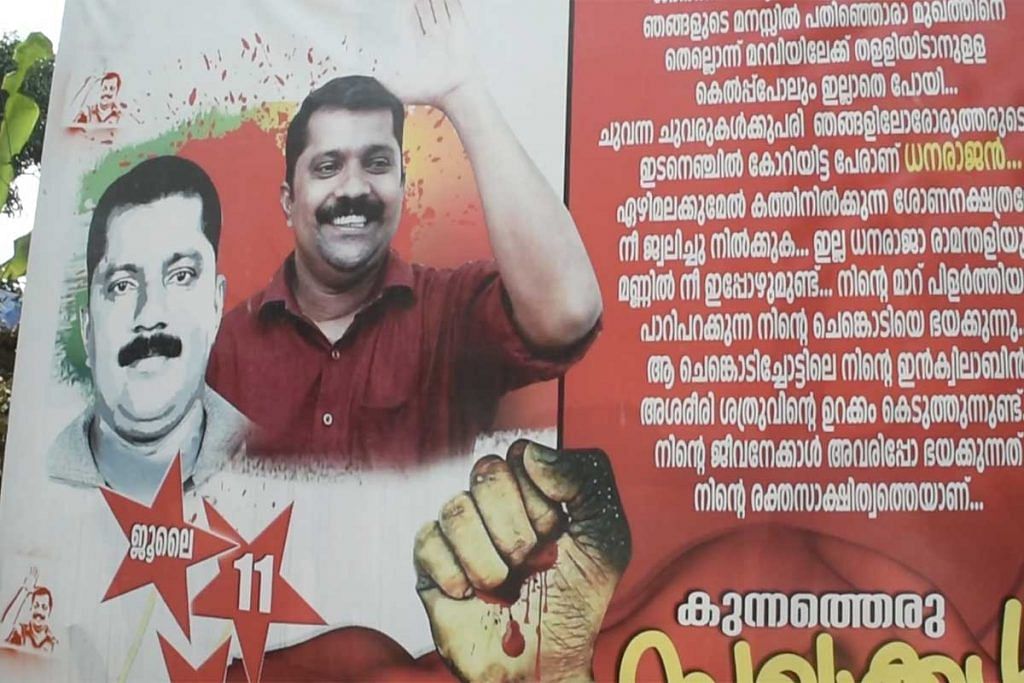
‘You kill one of mine, I take out one of yours’
In the killing fields of Kannur in Kerala, men from both the RSS and the CPI(M) are locked in an unending cycle of murderous, tit-for-tat attacks. As many as 216 men have died since 1969 here, 69 of them between 2000 and 2016.
Kannur is where the current national pastime of ‘whataboutery’ posing as intellectual debate gets a twist. ‘What about Kannur?’ has joined the old list of ‘What about 1984?’, ‘What about Muzaffarnagar?’, ‘What about Shah Bano?’ and ‘What about Malda?’
Journalists in the national capital who decry lynchings in the name of beef and inter-faith marriages are routinely heckled for ignoring Kannur, where RSS men are killed by the CPI(M). It is another matter that police data shows the two groups have more or less the same body count.
But Kannur is perhaps where the RSS can best understand what being a ‘minority’ is – and what being killed for your beliefs can mean.
The RSS is not really turning the other cheek here either. The political war here is not unstructured mayhem. It is conducted in a cold, structured rhythm of the ‘you kill one of mine, I take out one of yours’ of the 1920s Chicago-style bloodshed between gangs – minus the ‘bang bang’ and the narcotics.
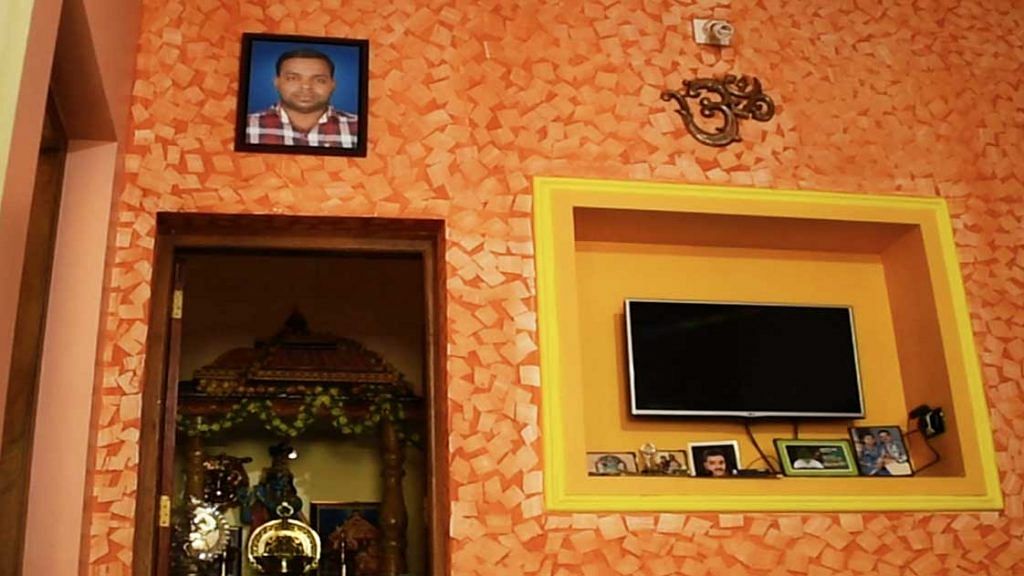
A murder leads to a spiralling loop of reprisals
Dhanraj controlled employment opportunities in his area, say RSS workers. He ensured only his party members had first-go at works contracts, bank jobs. He even blocked RSS sympathisers’ access, they claim.
In July 2016, men on motorcycles barged into Dhanraj’s frontyard in village Kunnaryu. He ran to hide behind the well. His wife and mother followed him, as his screams for help tore through the night air. The men chased him down, cut his neck, slashed his chest, and left his wrist hanging precariously.
“Dhanraj died on the way to the hospital,” recalls Sajini, 35, his wife. “This is a CPI(M) village. The attackers were RSS men. They had thrown stones and smashed our windows three weeks before that night. But I never thought it would come to this bloody end.”
His posters calling for revenge give her comfort, because she says it is a sign of how popular he was. Her sons give her a reason to pull on, but she has stopped singing ballads since.
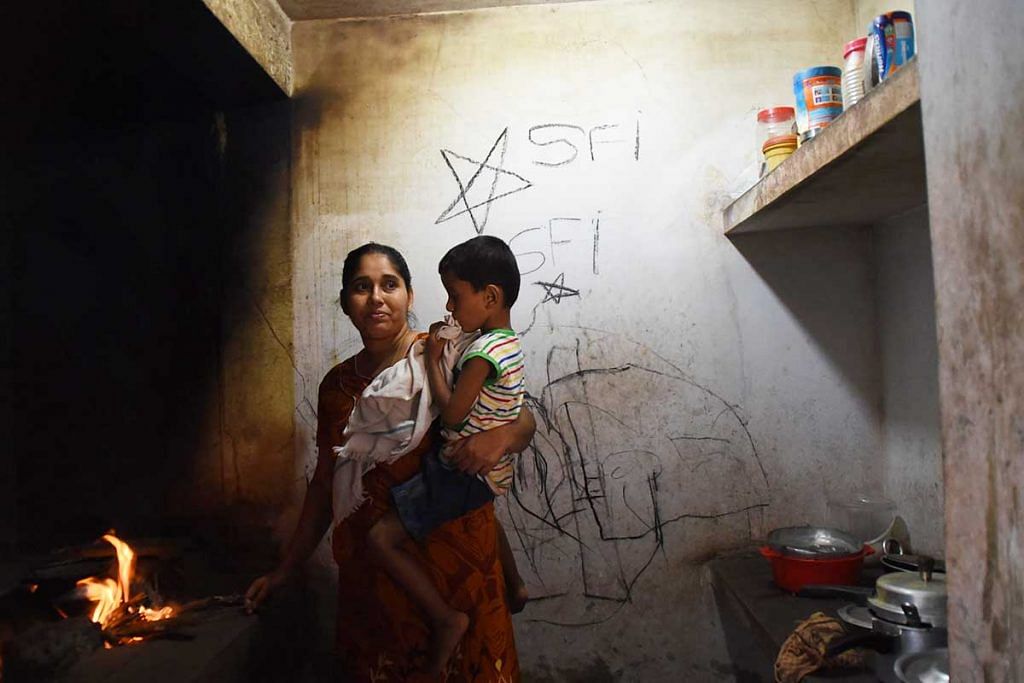
But Dhanraj’s murder also kicked off a spiralling loop of reprisal attacks. In fact, the CPI(M) struck the same night.
A group of men pummelled and beat up a 54-year-old auto-rickshaw driver and RSS’ trade union worker C. K. Ramachandran with iron rods at his home in the nearby Ayyur village. As his wife Rajini begged, the men ripped out her mangalsutra and said “you won’t need this anymore”. Then she saw them kill him with their swords. She screamed for help as he lay in a pool of blood on her lap. But nobody came.
“It was as if everybody had gone deaf that night,” she recalls.
The madness didn’t end there.
The next day, the RSS office nearby was vandalised, windows broken and a crude bomb thrown into the room where the khaki uniform ‘ganvesh’ was stored.
Ten months later, they came for Biju.
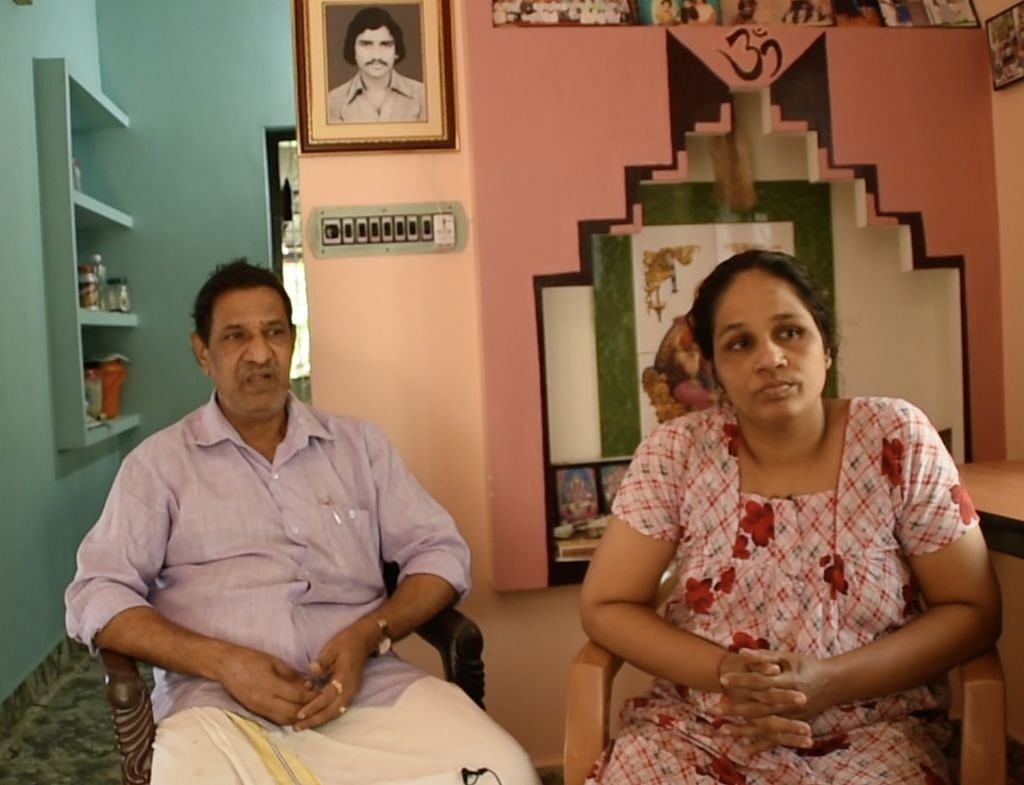
Equal and opposite reactions over decades
Reprisal political violence in Kannur is not new, and is not a phenomenon that began with the rise of the BJP and the RSS. It is almost five decades old, and before the RSS came into the picture here in 1980, the bloody battle was waged between the Congress and the CPI(M). Members of other parties like the Indian Union Muslim League also get killed occasionally.
An RTI request to the police by 101reporters.com showed that 69 political murders took place between 2000 and 2016. Of these, 30 were from the CPI(M) and 31 from the RSS/BJP.
In the last 10 years, 23 BJP/RSS members and 19 CPI(M) members have been killed in Kannur. In the last three years, six BJP/RSS members and five CPI(M) members were killed. The year 2017 witnessed two BJP/RSS deaths.
Analysts say that Kannur – with its feudal moorings and anti-imperialist struggles – has historically exhibited a dominant trend of settling disputes through non-democratic means, especially street fights.
“There are many exclusive zones in Kannur with distinct political cultures; these are called party villages,” says T. Sasidharan, head of the department of political science at Sreenarayana College and author of the book titled ‘Radical Politics of Kannur’.
Party villages are a unique Kannur phenomenon. Political allegiance is key to marriages and employment here.
Sasidharan says that the tradition of Kalaripayattu has set the culture of ‘revenge fight’ deep in people’s psyche here.
‘The tally of killings have to be maintained’
The political killings have not much to do with ideology or the ‘idea of India’. They are about not yielding an inch to the other.
“These attacks are not about ideology. They are about physical domination, establishing control and supremacy and conquering villages,” says Sasidharan. “The rest of India witnesses electoral violence; here it is about conquering political villages.”
A senior official in Kannur, who asked not to be named because he’s not allowed to comment on political matters, says: “At any given point, the tally of killings have to be maintained. Usually, you take out someone of the same rank or status.”
And defectors are rarely spared.
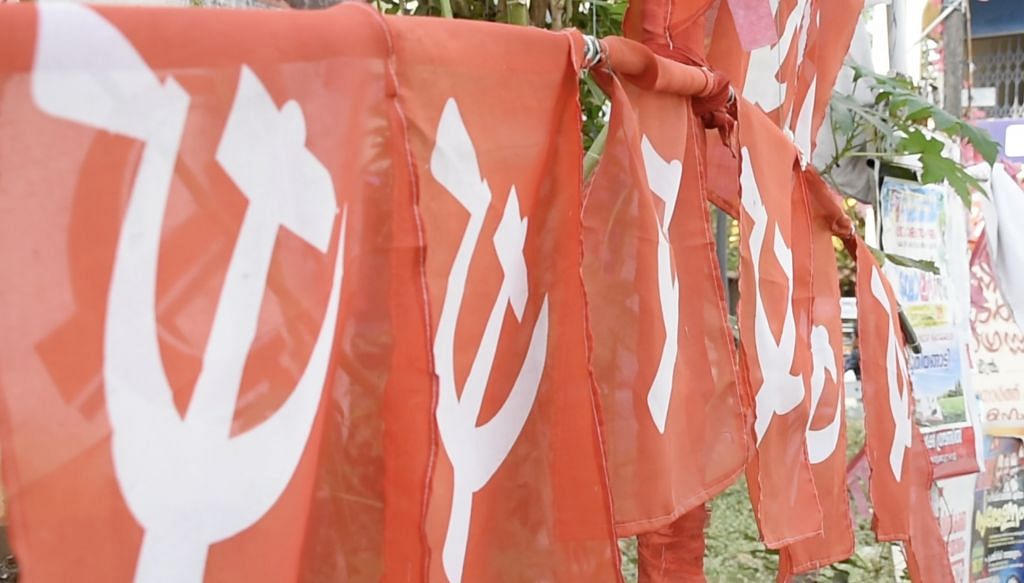
“The habit is tit-for-tat killings; it helps maintain balance,” says K.T. Chandan Master, a retired school principal and former municipal corporation chairman from the CPI(M). His son Sudhir, a homoeopathic doctor, lies in a hospital bed next to him in Kozhikode with multiple fractures.
On Christmas night last month, Sudhir was out on house calls when some men hit him with iron rods, swords and axes near a bus shelter in Ayyalur village.
Everybody in the area immediately knew that it was a revenge attack for a week-old attack, when RSS workers were beaten up in a nearby village.f
“Every attack is a reaction to another attack,” Chandan Master says.
Sudhir was spared his life because of a trend that has emerged in recent months.
“The attacks are not aiming to kill. There are more instances of chopping off legs and arms, to leave you disabled for the rest of your life,” says A.N. Shamseer, the CPI(M) MLA from Thalassery in Kannur.
A police officer also confirms that not all attacks nowadays intend to kill; they target lower torsos instead.
Plotting revenge in 45 minutes or less
Revenge attacks are plotted and carried out like clockwork. One RSS leader says he likes to maintain a turnaround time of 10 minutes.
“When they attack us, we have to be quick in our reaction. I prefer ten minutes. If you delay, it becomes hard to maintain fear among your foe.”
But ten minutes is not always possible. A CPI(M) member boasts of 30-45 minutes.
Members on both sides have WhatsApp groups and Facebook pages. The attacks are the subject of heated exchanges in these platforms. Angry members even post messages about giving it back, using the eye-for-eye language. Many of these threats and arguments do translate into street battles too. So, the police has begun infiltrating these chats.
“Sometimes, through our informers and from these groups, we get to know who is the next target, and we try to warn the person. We tell him to avoid certain routes and not go out alone at night. We tell them that hit teams are active,” says a police officer.
At times, after an attack, there are explosions nearby just to distract the police. It is standard operating procedure for the attackers to vacate their homes for days and go into hiding.
But the biggest problem for the police is to prove “neutrality” in the face of polarisation and politics. It is imperative that the police are seen as using proportional force on both groups.
Sometimes people come to the police and own up an attack by giving a deliberate wrong confession, in order to delay the investigation. Cases routinely take eight to ten years to conclude in court. And the average tenure of a Superintendent of Police in Kannur is 8 months.
Moving beyond Kannur
As long as the headlines about violence stayed buried in local papers, Kannur’s image was not a problem for local officials. But now, thanks to the rising power of the BJP nationally, as well as social media, the Delhi-based media and even international news organisations have begun to cover it. Kannur is now a byword for political killings.
“Kannur district deserves better,” complains Siva Vikram, the superintendent of police in Kannur. “There is so much more to it than just these killings.”
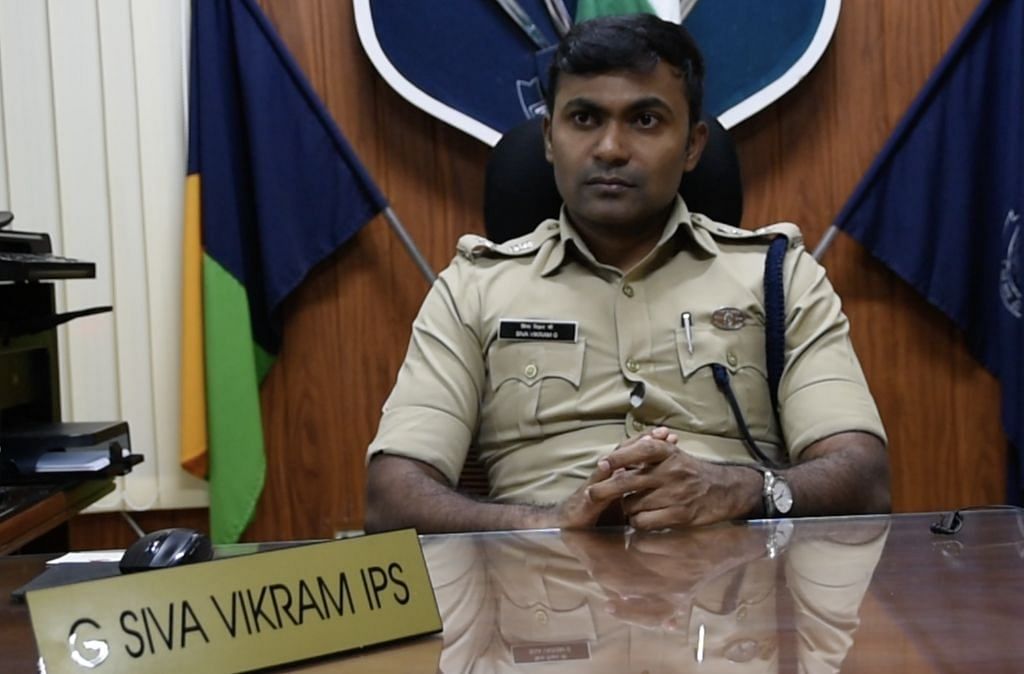
Then he offers a list of other Kannur legacies: it is a place of temple festivals and thaiyyams; the first bakery in the district opened in 1880; the Conor Vayal Stadium has hosted Ranji Trophy cricket matches; it has the longest drive-through beach in Asia; the Indian Naval academy is situated here; the biggest airport in southern India is going to be inaugurated in six months; the state tourism department is working on introducing kayaking and rafting tournaments here; and it has the highest density of what are called ‘reading rooms’ (libraries) in India.
But now ‘Kannuritis’ is beginning to spread. In recent months, the violence has spread to Thiruvananthapuram and Thrissur as well.
The battle for electric poles
There are other arenas of the battle too. Party flags on the streets are routinely uprooted and vandalised by rival party gangs.
Another game is to paint electric poles in one’s party colour and write the party acronym on it. Now, the police have decided to reclaim the poles. They paint the poles in black and write “police” on them – 2,000 poles have been reclaimed so far in January. But not for long. The parties paint over them again. This goes on in a loop.
The police now book people who paint these poles under Section 153 IPC for ‘inciting violence’.
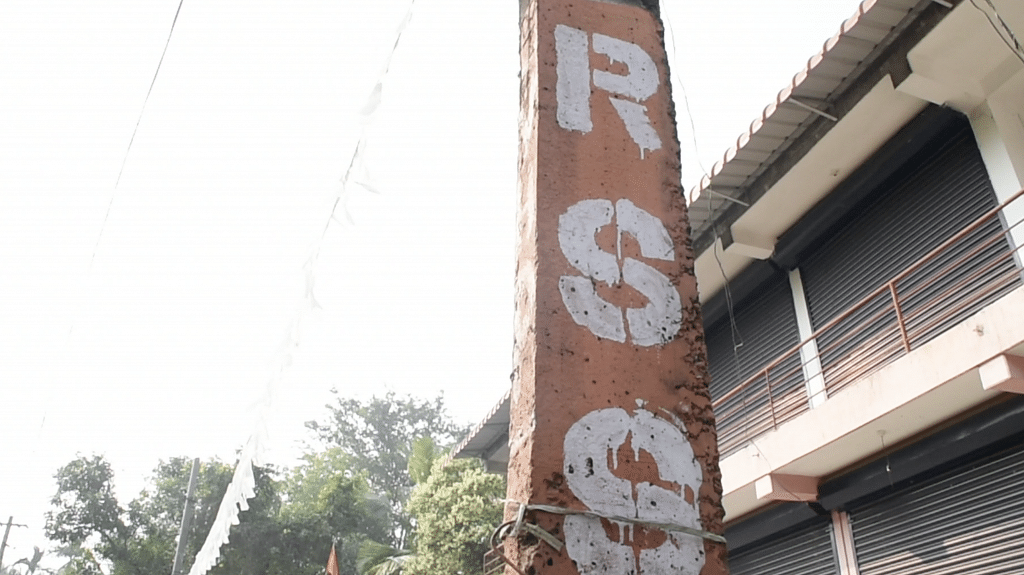
Last week, fighting broke out between two groups in Thiruvananthapuram after some RSS members came to paint the poles in a CPI(M) neighbourhood.
“I had gone to buy cake for guests in the night. I saw some men with paint in their hands. I asked them what they were doing in our area. And they began beating us up,” says Sujit Suresh, a 25-year-old student member of the CPI(M), who is now in hospital with a fracture.
Rise of the RSS
Kerala has the largest number of RSS shakhas in the country, over 4,000. Its reach is limited but growing, mostly because of Prime Minister Narendra Modi’s appeal among the youth.
“The RSS has become more daring in recent years because they now have a BJP MLA for the first time in Kerala and they rule the Centre,” says Jerin Joy, a student leader of the CPI(M).
For the RSS, the state is an important political and cultural fortress to breach.
“Our job is to keep reminding people here of their Hindu identity after almost eight decades of Communist influence,” says Nanda Kumar, the mandal in-charge for Annur. “Hindus here don’t go to temples as often as Muslims and Christians go to their mosques and churches.”
But RSS workers here literally lurk in the shadows. Driving through CPI(M) dominated areas, members often duck inside cars, or look away from the steely gaze of CPI(M) members who rule the streets. After dark, RSS members often look around them nervously, speak in whispers, go out in groups.
“There are informers who monitor us all the time,” says Vinod P.M., a local leader in Thalassery. “We are fighting for our very right to exist in Kerala.”
The RSS, he says, is a bond and a brotherhood. “If somebody is attacked in faraway Thiruvananthapuram, my heart hurts in Thalassery. It goes beyond ideology,” he says.
Analysts say that cadre-based political groups – like the RSS and the CPI(M) – often rely on this ‘all for one, one for all’ creed. The organisations also look after the families of victims of political violence.
Three months ago, BJP president Amit Shah marched with thousands of supporters in Kannur to protest what he called the ‘red terrorism’ of the communists. At a party function, he garlanded the teenage daughter of the slain auto-rickshaw driver Ramachandran. She sang ‘Vande Mataram’ on stage, and Shah praised her for soldiering on.
The BJP has also leveraged its power to escalate complaints about the Kannur attacks to the governor, and has asked for cases to be moved to the CBI in the Kerala High Court.
“The CPI(M) cannot tolerate our recent growth in Kerala, they want to eliminate us,” says Kummanam Rajasekharan, the BJP state president. “If it was an ideological war, we would accept it. But this is different. Although we want peace, but a counter-reaction is natural. But it is not planned.”
Coming to a screen near you
Popular culture has also absorbed the Kannur political violence.
Recently, a Malayalam movie was released using the Kannur killings as the backdrop to tell a love story. Much like the Bollywood hit Qayamat Se Qayamat Tak, this film portrays a young couple hailing from two warring political factions called the KJP and KPM – hardly veiled references. Both sides are shown indulging in vendetta killings.
The film begins with a post-attack bandh and ends with another. Nothing changes, except in the last scene, the exhausted, blood-soaked lovers hold each other and defiantly walk through curfewed streets.
The film is called Eeda. It means “here”.
(Police data analysed by Talha Ashraf)


